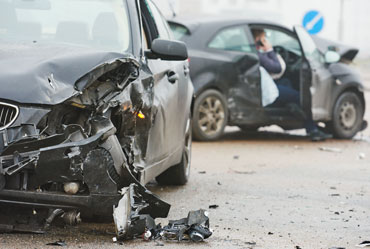Every year, millions of traffic collisions occur worldwide, leading to significant loss of life, property damage, and injuries. Understanding the causes and consequences of these incidents is essential for promoting road safety and preventing future accidents.
What Is a Traffic Collision?
A traffic collision, often referred to as a car accident, occurs when a vehicle collides with another vehicle, pedestrian, animal, road debris, or other stationary object. These incidents range from minor fender-benders to severe crashes involving multiple vehicles. While accidents can be unintentional, most are preventable with proper awareness and precautions.
Common Causes of Traffic Collisions
Traffic collisions can occur for various reasons, but some factors are more prevalent:
- Distracted Driving: Using mobile phones, eating, or other activities that divert attention from the road is a leading cause of accidents.
- Speeding: Driving above the speed limit reduces reaction time and increases the severity of crashes.
- Driving Under the Influence (DUI): Alcohol and drugs impair judgment, coordination, and reaction times, leading to deadly outcomes.
- Weather Conditions: Rain, fog, snow, and ice can make roads slippery and reduce visibility, increasing the likelihood of accidents.
- Reckless Driving: Aggressive behaviors such as tailgating, weaving through traffic, and ignoring traffic signals are common causes of collisions.
- Mechanical Failures: Issues such as brake failure, tire blowouts, or engine malfunctions can lead to accidents if vehicles are not well-maintained.
Consequences of Traffic Collisions
The repercussions of traffic collisions extend beyond the immediate physical damage:
- Injuries and Fatalities: Traffic collisions are a leading cause of injury and death globally. Victims may face long-term disabilities or chronic pain.
- Economic Impact: Accidents result in costly vehicle repairs, medical bills, lost wages, and increased insurance premiums.
- Emotional and Psychological Effects: Survivors may experience post-traumatic stress disorder (PTSD), anxiety, and depression after a crash.
- Traffic Congestion: Accidents can cause significant delays, particularly in urban areas, and impact overall productivity.
Preventing Traffic Collisions
Prevention is the most effective strategy for reducing traffic collisions. Here are some key measures:
- Follow Traffic Rules: Obey speed limits, traffic signals, and road signs to ensure safe driving conditions.
- Avoid Distractions: Keep your focus on the road at all times. Use hands-free devices if necessary.
- Practice Defensive Driving: Be aware of other drivers and anticipate potential hazards to minimize risks.
- Maintain Your Vehicle: Regular maintenance checks can prevent mechanical failures that might lead to accidents.
- Don’t Drive Under the Influence: Always designate a sober driver or use alternative transportation if you’ve consumed alcohol or drugs.
- Adapt to Weather Conditions: Adjust your driving to suit the weather by reducing speed and increasing the distance between vehicles.
The Role of Technology in Preventing Collisions
Advancements in technology have made significant strides in preventing traffic collisions. Features such as automatic emergency braking, lane-keeping assistance, and adaptive cruise control enhance driver safety. Additionally, connected vehicle systems and smart infrastructure can further reduce accident risks through real-time communication and alerts.
Conclusion
Traffic collisions are a serious issue, but they are not inevitable. By understanding their causes, recognizing their consequences, and adopting preventive measures, we can all contribute to safer roads. Whether as a driver, pedestrian, or cyclist, road safety is a shared responsibility. Together, through vigilance and education, we can significantly reduce the occurrence of traffic collisions and save lives.
